Garmin Fenix 7 vs Apple Watch 7: Which is the best fitness watch?
We put two of the best fitness watches to the test
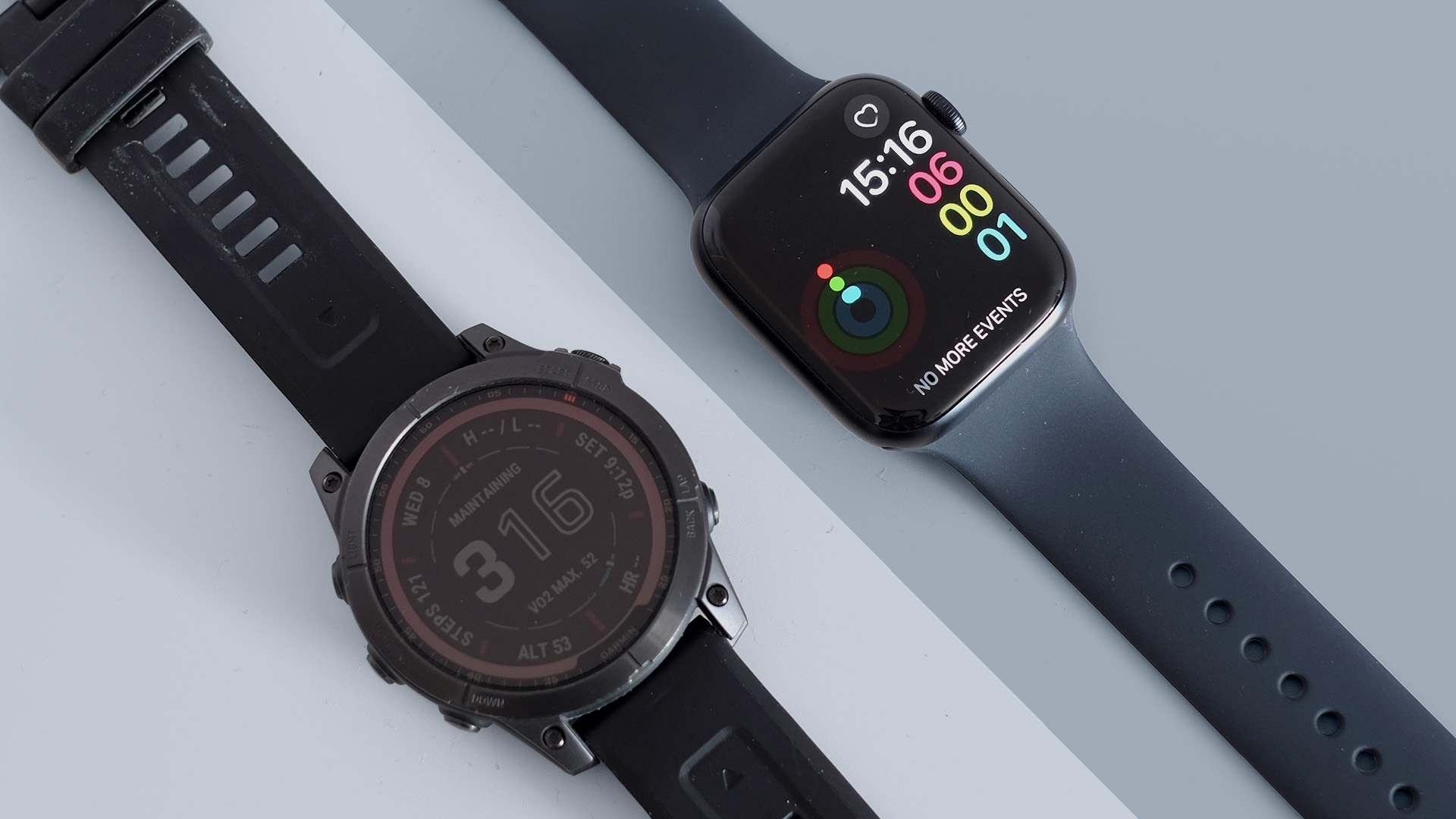
The Garmin Fenix 7 and Apple Watch 7 are very different types of watch, but they are two of the best options for those who want to track regular exercise.
Hardcore runners and triathletes may immediately head to the Garmin, but is the Fenix 7 really a better fitness tracker than the Apple Watch 7? We’ve used the watches side by side, or wrist to wrist, to see how the experience differs, and how accurate you can expect the data you’ll see to be. The best choice might depend on whether you're looking for the best running watch, or one of the best smartwatches for everyday use.
The big scoop? We don’t have one. These are great exercise trackers, and which you should buy still depends on the type of watch you’d prefer to own: a long-lasting exercise watch (hint: Garmin) or a glossy “true” lifestyle smartwatch you need to charge each day (hint: Apple Watch). However, we did uncover some interesting points about how the Garmin Fenix 7 and Apple Watch 7 operate.
Garmin Fenix 7 vs Apple Watch 7: Heart rate accuracy
One obvious way to establish concrete differences between the Fenix 7 and Apple Watch 7 is to analyze their heart rate accuracy. We used a chest strap heart rate sensor as an adjudicator to take a look at which watch provides better results.
Until recently this would have been an easy win for Apple. It has, for years, set the standard for consumer-level wrist HR. In the last couple of years we’ve seen Garmin’s overshoot at the start of workouts, and results that change a little between software updates.
Garmin has made big improvements with its current Elevate 4 HR sensor and, just as important, the software manning it.
The test we’re going to show you here was a roughly 8.5km “run”. Those inverted commas refer to the many dips in speed designed to bring the heart rate down, before ramping it up again. We still see wearables that will miss these spikes altogether, making them useless for any remotely serious stat-gathering.
Sign up for breaking news, reviews, opinion, top tech deals, and more.
The Garmin Fenix 7 and Apple Watch 7 both nailed this test. Here are their graphs, with each result compared to a Wahoo chest strap (one of our best heart rate monitors). First up, the Garmin:
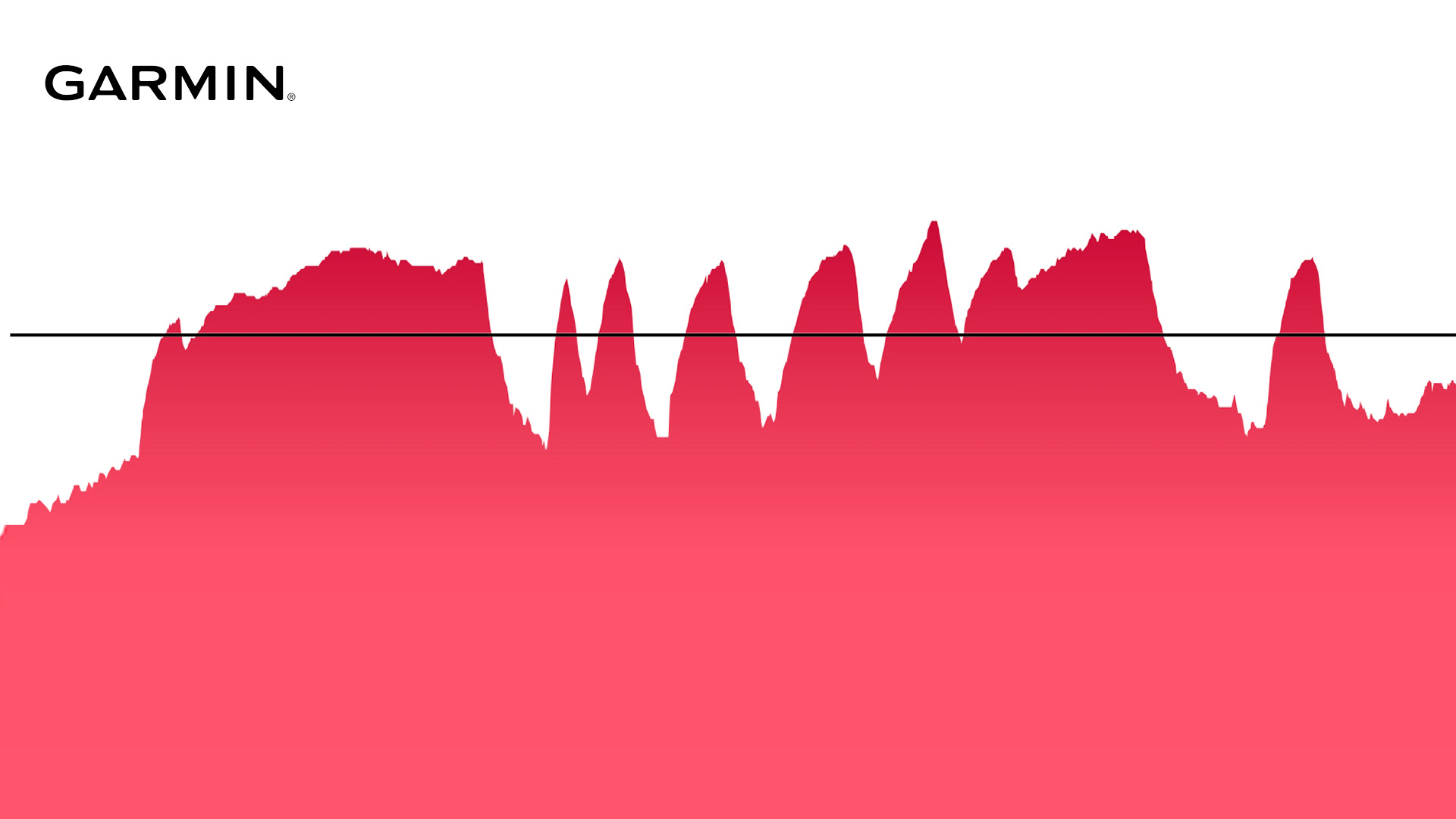
Compare this with the Apple Watch:
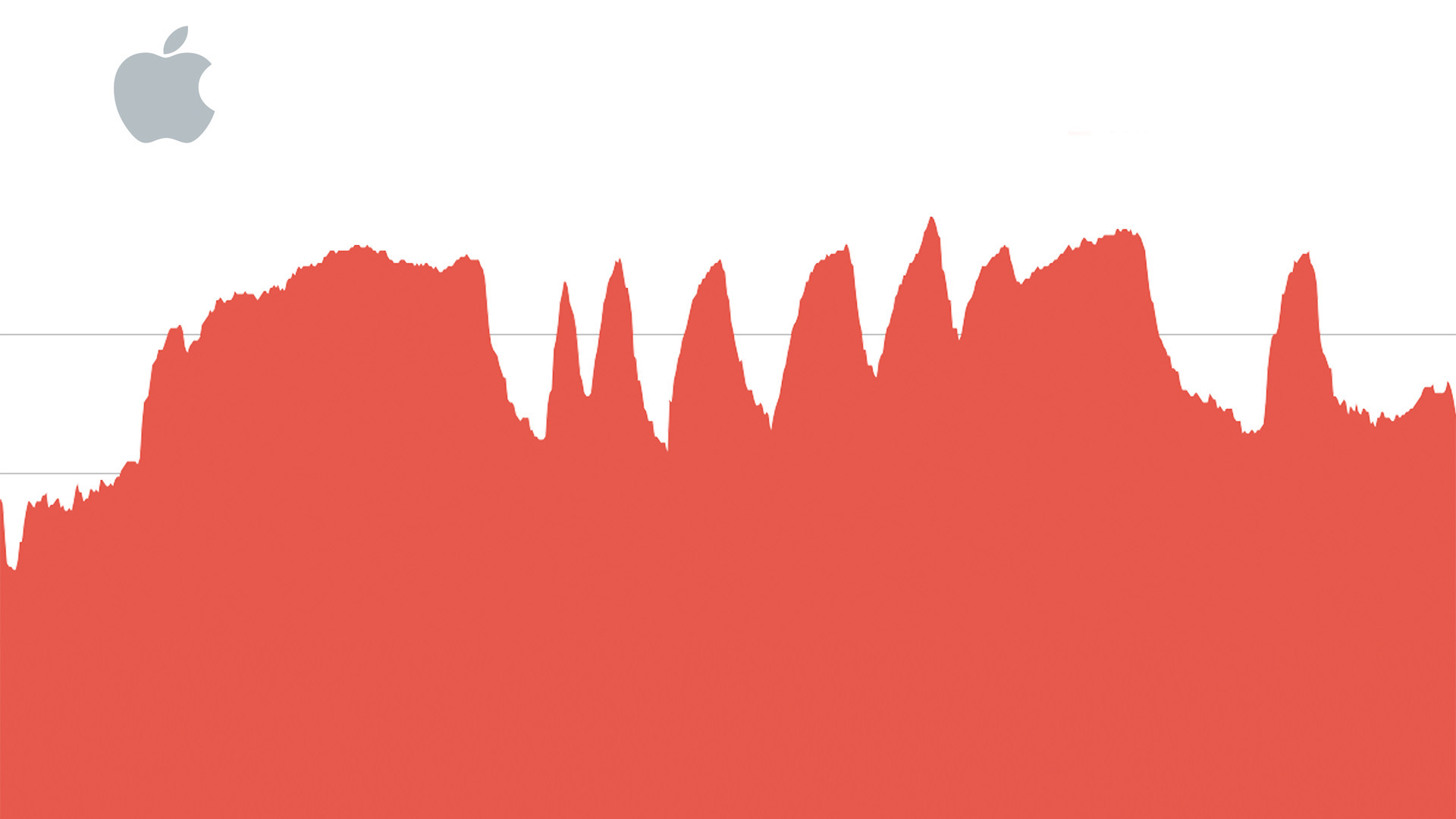
They are unnervingly similar readings to those of the Wahoo chest strap. All three recorded the same maximum HR of 173bpm. All three calculated the average heart rate at 135bpm. This is the best result we could have asked for.
There are more, mostly fractional, differences in the Garmin Fenix 7’s results. Look at the low points in the Garmin graph. Towards the end of the session there are a couple of little tiny spikes not replicated in the other wearables. And in one of the early dips, the Fenix 7 bottoms out at 101bpm where the Wahoo chest strap and Apple Watch carried on barreling down to ~97bpm. Nothing major, but it’s there.
The momentary higher value blips may be a result of how Garmin operates. Dig deep into the results in the Garmin Connect app and you’ll see recording of HR at varying intervals. Sometimes the data points are separated by just one second, other times there are 5-6 seconds between them. This suggests the Fenix 7 logs a result when it judges the data has met a certain signal-to-noise ratio, and deemed to be respectably accurate.
Apple’s graph is made up of 12 data points a minute, one every five seconds. This is naturally going to result in a slightly smoother graph, and points to an intention to get rid of second-to-second aberrations.
We also compared the two trackers during a 1hr 15 minute walk, where the lower overall heart rate might bring out some greater differences — particularly as the Garmin only seemed to slip up a little at lower HR. Here are the graphs.
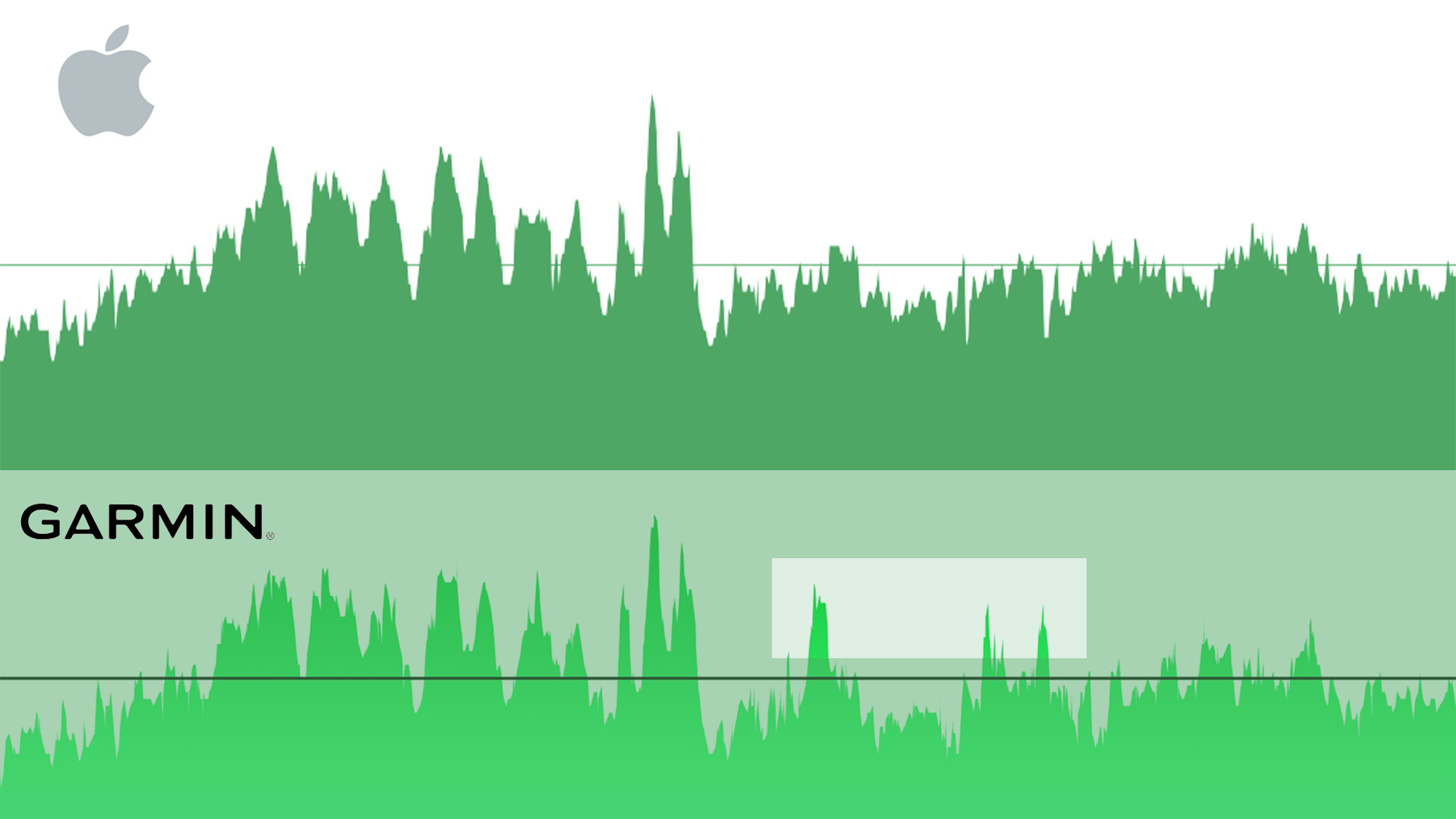
While the lines look messier this time, the highlighted box shows a few Garmin aberrations we noticed during the session itself. A couple of times — three according to this graph — the Fenix 7 recorded rates of 92-95bpm when the reality was up to 10bpm lower.
Does it matter? Not hugely. Both watches still recorded an average heart rate of 83bpm. But it seems the Apple Watch’s HR array is still slightly better than Garmin’s.
Garmin Fenix 7 vs Apple Watch 7: Distance accuracy
There’s also a notable difference in the distances recorded by the Fenix 7 and Apple Watch 7. In the initial run, the Apple Watch pegged the length at 8.21km, the Fenix 7 at 8.39km.
To confuse matters further, the Wahoo app on our test Oppo Find X5 Lite recorded 8.45km. There’s a 185m distance between the two watches. And while this 2.1% disparity does not sound like a lot, you certainly feel it when one watch marks each km a good way past the other — it affects your “per km” results noticeably.
The reason becomes clear when you look at the route maps logged by the two watches. Here’s a short section to demonstrate.
Apple uses significant route smoothing, snapping to paths. Garmin basically relays the data points recorded by the GPS system. It’s the purist’s way, because GPS data is recorded at intervals (up to once a second in high-end fitness watches), but which is more accurate? This is hard to gauge, but intuitively it makes sense that you follow a path rather than running like a character from an Atari 2600 game — as per the more jagged Garmin style.
Anecdotally, we’ve found the Apple Watch tends to consistently record slightly lower distances than successive Garmins we’ve tested. So we like Garmin because it says we are slightly faster, and run/walk slightly longer.

Garmin Fenix 7 vs Apple Watch 7: Data handling
A slightly more reliable heart rate reader, a more “human” approach to location tracking: so is the Apple Watch 7’s data better?
If you actually want to look at any of this stuff, how the data is handled matters. And Garmin does that a lot better.
To get the data used in this piece, we had to export our entire dataset from Apple Health, convert it into a CSV spreadsheet, manually pull out the right segments of heart rate rata and create a chart. Here’s how Apple actually displays your heart rate in Apple Fitness.
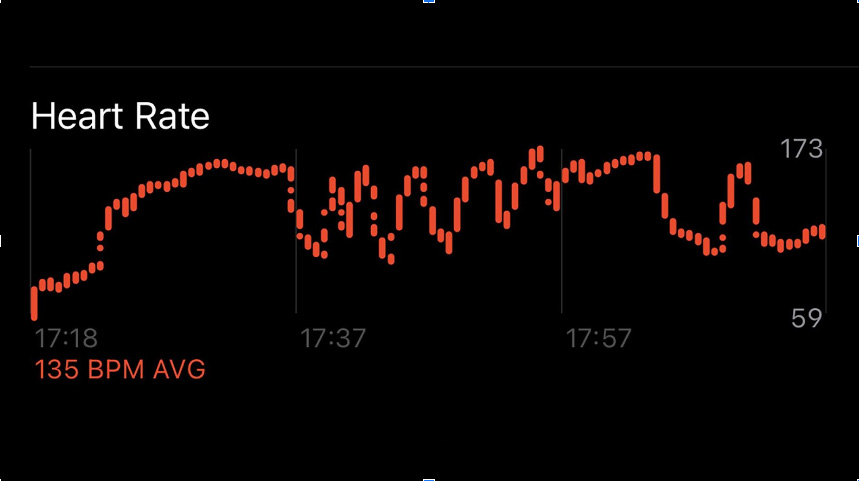
It’s so rudimentary you could never tell if this is accurate data or not. And you can’t scan through the workout to see what HR you reached during those multiple exertion peaks. The Apple Watch Series 7 has hardware fit for stat nerds, but the software is made for quick digestibility. You can use third-party apps of course, but we’re mostly looking at the “fresh out of the box” experience here.
The Garmin graph seen below was pulled right from the app. We just fiddled with the color to make it look closer to the other two. Garmin Connect lets you glide a finger through to see the results second-to-second as well. It’s highly nerd-friendly. And by the time we had finished the sessions mentioned here, the Apple Watch Series 7 had gone through almost two full charges while the Garmin Fenix 7 had only lost 20% battery.
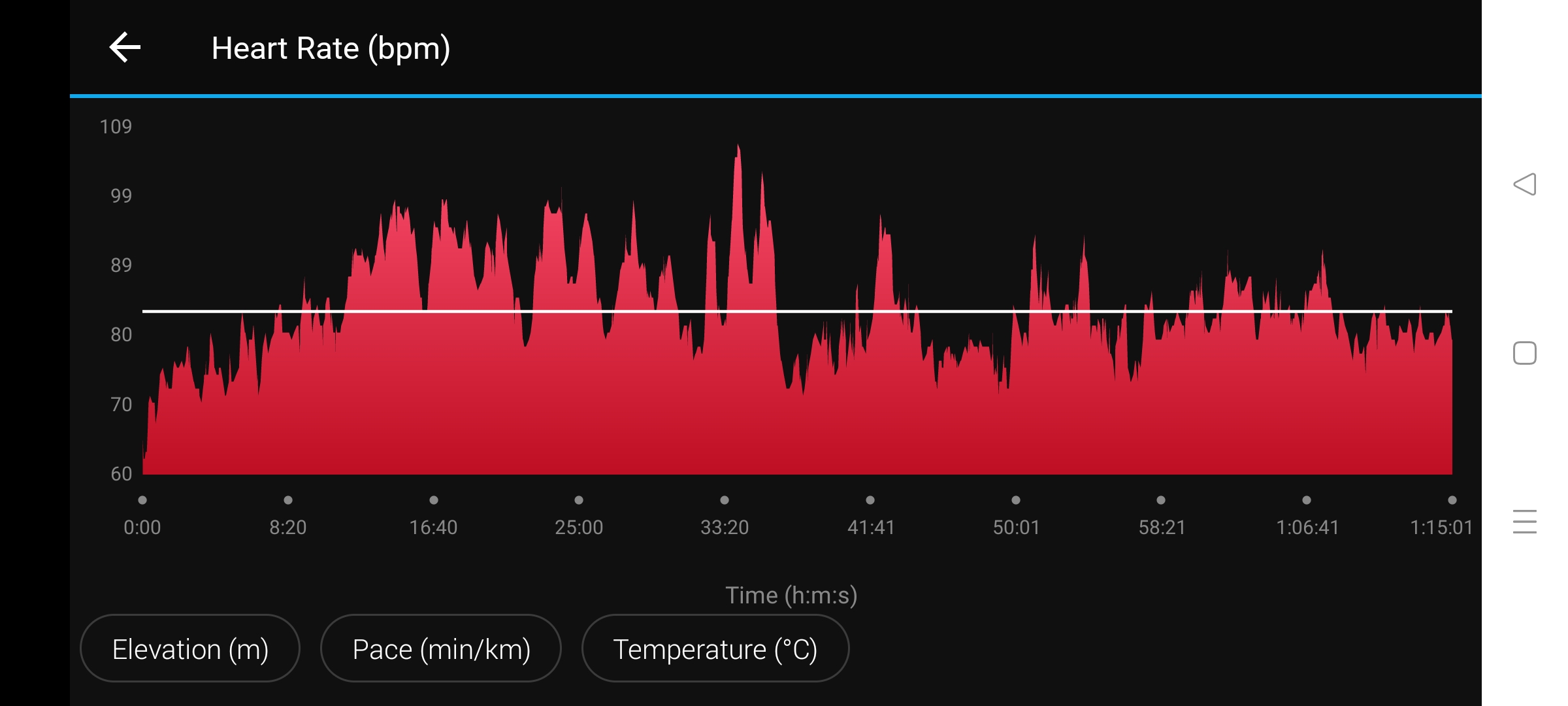
Garmin Fenix 7 vs Apple Watch 7: Comfort during workouts
We were not originally planning to talk about comfort in this piece, but in this case it also has an effect on tracking accuracy. The two exact watches we tested were the Garmin Fenix 7 Sapphire Solar with Titanium casing and the 45mm aluminium Apple Watch 7 with a standard fluoroelastomer strap.
Neither is particularly light. The Apple Watch weighs 67g, the Garmin 75g. However, the Apple Watch feels significantly better when you run as there’s no sense the watch casing builds up momentum and tries to move around on your wrist.
Such movement is a heart rate sensor’s enemy, and is why you need to make sure heavier watches are trussed up tight on your wrist. However, this difference only applies to these two models. We tested the Garmin Forerunner 955 recently. It weighs just 53g and feels great when you run, and is much more comfy to wear overnight for sleep tracking. Garmin makes plenty of watches lighter than the Fenix 7.
Other considerations and benefits
Is the message the Apple Watch is better for normal folk, the Garmin Fenix 7 better for tech and stat geeks? To an extent it is, but when you look a little deeper you’ll see that some of the Garmin range’s most advanced features are there to help you get away from glowing screens — your phone, TV and tablet. The way an Apple Watch pairs so beautifully with Apple Fitness+ shows Apple’s wearable clearly does not.
For example, you can download whole continents’ worth of maps to high-end Garmins. Garmin Connect lets you upload countless guided workouts to them without paying a cent — you just don’t get a pepped-up trainer to egg you on. And they can control a smart turbo trainer to make indoor bike training at least marginally less dull. These features don’t get you away from the Fenix 7’s own screen, but as it’s largely passively let we’ll let it off on a technicality.
However, if you're just looking for a shot in the arm to exercise at home, check out our Apple Fitness+ explainer to see whether Apple's comprehensive Peloton-style fitness package is right for you.

Andrew is a freelance journalist and has been writing and editing for some of the UK's top tech and lifestyle publications including TrustedReviews, Stuff, T3, TechRadar, Lifehacker and others.